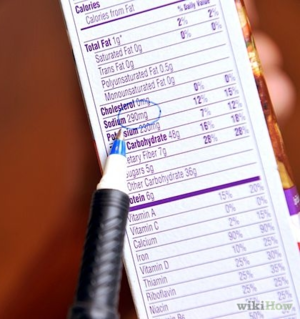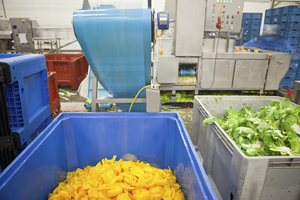
Food facilities currently using or considering British Retail Consortium (BRC) certification need to be aware of some key changes heading their way. The consortium published the seventh issue of its internationally recognized BRC Global Standard for Food Safety in January. Audits against Issue 7 will begin in July 2015, and all food companies using BRC will transition to using Issue 7 by June 2016.
Among the new and revised requirements in the standard, the key changes overwhelmingly focus on supplier management and label control. In fact, two brand new fundamental clauses are introduced in Issue 7
- 3.5.1 Management of raw material suppliers and packaging.
- 6.2 Label and pack control
Food facilities that do not comply with these fundamental clauses could receive a major non-conformance, resulting in not achieving an initial certification or withdrawal of certification for facilities that are already certified. Your best game plan for achieving and maintaining certification is to review and implement these key changes as well as any other minor changes not covered in this article. In addition, it is important to include these two new fundamental requirements and any additional changes in your internal auditing activities.
Supply Chain Traceability
Management of suppliers along the entire supply chain, from raw materials and packaging, to agents and brokers, is an increasingly important activity for any food company. With the new focus on food fraud as an emerging risk within FDA’s Food Safety Modernization Act (FSMA), as well as the UK’s Food Standards Agency (FSA), BRC has updated its food standard to include authenticity of food and supplier traceability.
So what specifically has changed? In section 3 — Management of Suppliers, the statement of intent section now includes authenticity of food (food fraud) that is linked to management commitment. Food fraud consists of two components: economically motivated adulteration and ingredient substitution.
Risk Assesment
A formal risk assessment that includes food fraud and material substitutions is now required annually to reflect changing economic circumstances and market intelligence which may alter the potential risk. It must be reviewed by senior management during the management review process.
This assessment should include all raw food materials to assess the potential risk of adulteration or substitution. It should include certain specific sources of information, provided directly by the manufacturer, processor, packer or consolidator, or alternatively through the agent or broker. Information to consider includes:
- Historical evidence of substitution or adulteration with your type of product/raw material or where you source the material.
- Economic factors which may make adulteration or substitution more attractive. For example, would anyone gain an economic advantage by committing fraud with this product?
- Ease of access to raw materials through the supply chain. Is the product safe and secure as it travels through the supply chain?
- Sophistication of routine testing to identify adulterants.
- Nature of the raw material.
- Regulatory information such as import alerts, companies banned from exporting to other countries due to regulatory performance history, etc.
Food Fraud

Product authenticity is also covered in the new clause, 5.4 — Product Authenticity, Claims, and Chain of Custody. This section specifically focuses on reducing food fraud, like the recent issues with melamine in Chinese food products and the European horse meat scandal. Other food fraud examples include those of honey, olive oil, and substituting less expensive fish for more costly species like red snapper. The main reason we’re seeing such an explosion of DNA testing for specific species is to identify product substitution.
New requirements in this section include:
- Analyzing information sources taking into account economic, historical, geographic factors, etc.
- Conducting an annual vulnerability assessment for raw materials (linked to section 3 described previously).
- Having appropriate measures or product testing in place for at-risk materials to reduce potential contamination.
- Verifying label claims (origin, breed/ variety, GMO status, identity preservation, etc.) in each batch of raw materials with mass balance traceability tests conducted every six months to validate the label claims.
- Keeping clarification on food claims up-to-date.

Helpful Resources
USP Pharmacopeia and Food Chemical Codex are good sources for food fraud investigation. The USP has an online food fraud database that contains scientific studies to further define what chemicals and methods are being used to substitute raw materials.
Other sources of food fraud information can come from trade associations, government resources, etc. These may include such information as import alerts, compliance history, companies prohibited by regulators.
New Supplier Regulations for using Agents and Brokers
In addition to the inclusion of food fraud, the Management of Suppliers section also places a renewed emphasis on how raw material and packaging suppliers are reviewed. New Clause 3.5.1.3 requires the facility to know the last manufacturer or bulk consolidator even if an agent or broker was used. When using agents/ brokers, purchasers need to know who was the last manufacturer or the last consolidator for bulk commodities. Agents and brokers may not want to share this information because the purchaser could now go directly to that supplier and cut out the middle man, thus affecting their business. However, the standard requires that this information be provided for traceability reasons to ensure that proper GMPs, HACCP, and food safety practices are in place.
There is an escape clause that would exempt agents/brokers that are certified to a BRC scheme or would allow other appropriate verification activities to be used. Examples of exceptions allowed in the escape clause include 100% inspection of the product. Most people are using:
- Certificates of analysis.
- Increased microbiological sampling.
- Review of a third-party audit report.
- Formally agreed specifications.
- Confirmation of compliance with customer codes of practice (refer to clause 3.12.2).
Another key addition to the Management of Suppliers section is that traceability now includes primary packaging. Section 3.9.3 requires all suppliers to have effective traceability, including agents, brokers and packaging, to provide confidence in suppliers. The BRC auditor will not do a raw material traceability test, but rather will review the site’s process to determine that suppliers are capable. However, on a certification they will still do a food product traceability test. If a label claim is being made (e.g., nonGMO, gluten-free, etc.), the auditor will likely choose that product and the raw materials subject to that claim and do a mass-balance traceability exercise.
Labeling & Package Control

Another key change to BRC Issue 7 is the inclusion of product labeling and packaging control (5.2 and 6.2). According to data collected in the FDA’s Reportable Food Registry, 44% of food recalls are attributed to improper labeling (e.g., undeclared allergens). Having the correct label and making sure the right product goes into the right package should not be a difficult task, but the number of recalls tell a different story.
The growing number of recalls due to undeclared allergens continues to be a major problem costing companies millions of dollars and losing consumer trust in the ability of companies to provide safe food. Risked-based food safety is now BRC terminology. Labeling or allergen control programs will have to be evaluated according to risk and include preventive controls that will mitigate identified risks. Anything not declared on the label could be declared a contaminant.
Creating a Thorough Audit Program

Product labeling has to comply with appropriate legal requirements to reduce recalls due to inaccurate labeling for allergens and other undeclared ingredients. Labeling information should be reviewed when changes are made to recipes, raw materials, suppliers, country of origin (of raw materials), legal requirements, etc. In situations where customers or third-parties are responsible for labeling, appropriate information must be communicated. This clause should be part of your internal audit program.
Section 6.2 Label and Pack Control is a new fundamental clause established to prevent label errors resulting in recalls/ withdrawals and control label content to ensure products are correctly labeled and coded. This requirement is in place to ensure that the correct packaging material makes it to the appropriate packaging line/equipment. It also requires printing and content control including, as appropriate, date coding, batch coding, quantity indication, pricing information, bar coding, and country of origin, all of which is to ensure you are using the most up-to-date label.
When automated online vision equipment for label detection is used, the equipment must be capable of detecting and rejecting improper packaging/labeling. This requirement may be reviewed similar to a preventive control, but may or may not be a CCP.
Other Changes
There are other new changes that will affect your facility as you transition to BRC Issue 7, this article introduced the two major key changes. Someone at your facility, or even a specific department, should be responsible for reviewing changes to BRC requirements and interpretation guidelines to allow you adequate time to update your procedures and records and implement new requirements before your next certification audit.

